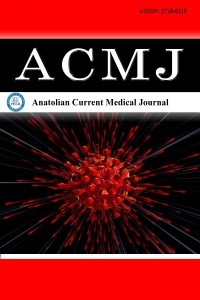1.
Gupta AK, Nethan ST, Mehrotra R. Tobacco use as a well-recognized cause of severe COVID-19 manifestations. RespirMed. 2021;176:106233.
2.
Özgür Ö, Evcil FY, Eroğlu HN, et al. Üçüncü el sigara dumanıhakkında farkındalık ölçeği Türkçe formunun geçerlik vegüvenirlik çalışması. SDÜ Tıp Fak Derg. 2021;28(3):499-506.
3.
Öberg M, Jaakkola MS, Woodward A, Peruga A, Prüss-UstünA. Worldwide burden of disease from exposure to second-hand smoke:a retrospective analysis of data from 192 countries.Lancet. 2011;377(9760):139-146.
4.
Ahluwalia IB, Smith T, Arrazola RA, et al. Current tobacco smoking,quit attempts, and knowledge about smoking risks among personsaged ≥15 years-global adult tobacco survey, 28 countries, 2008-2016. MMWR Morb Mortal Wkly Rep. 2018;67(38):1072-1076.
5.
Ioannidis JP, Jha P. Does the COVID-19 pandemic provide anopportunity to eliminate the tobacco industry? Lancet GlobHealth. 2021;9(1):e12-e13.
6.
Winickoff JP, Friebely J, Tanski SE, et al. Beliefs about the healtheffects of “thirdhand” smoke and home smoking bans. Pediatrics.2009;123(1):e74-e79.
7.
Escoffery C, Bundy L, Carvalho M, et al. Third-hand smoke as apotential intervention message for promoting smoke-free homesin low-income communities. Health Educ Res. 2013;28(5):923-930.
8.
Shehab K, Ziyab AH. Beliefs of parents in Kuwait about thirdhandsmoke and its relation to home smoking rules: a cross-sectionalstudy. Tob Induc Dis. 2021;19(66):1-13.
9.
Rendón AD, Unger JB, Cruz T, Soto DW, Baezconde-GarbanatiL. Perceptions of secondhand and thirdhand smoke amongHispanic residents of multiunit housing. J Immigr Minor Health.2017;19(1):162-169.
10.
Matt GE, Quintana PJE, Hovell MF, et al. Householdscontaminated by environmental tobacco smoke: sources of infantexposures. Tob Control. 2004;13(1):29-37.
11.
Drehmer JE, Ossip DJ, Rigotti NA, et al. Pediatricianinterventions and thirdhand smoke beliefs of parents. Am J Prev.Med. 2012;43(5):533-536.
12.
Hayrumyan V, Harutyunyan A, Torosyan A, et al. Tobacco-related risk perceptions, social influences and public smoke-freepolicies in relation to smoke-free home restrictions:findingsfrom a baseline cross-sectional survey of Armenian andGeorgian adults in a community randomised trial. BMJ Open.2022;12(2):e055396.
13.
Kotz D, Batra A, Kastaun S. Smoking cessation attempts andcommon strategies employed. Dtsch Arztebl Int. 2020;117(1-2):7-13.
14.
Hagimoto A, Nakamura M, Morita T, Masui S, Oshima A.Smoking cessation patterns and predictors of quitting smokingamong the Japanese general population:a 1-year follow-up study.Addiction. 2010;105(1):164-173.
15.
Mons U, Müezzinler A, Gellert C, et al. Impact of smokingand smoking cessation on cardiovascular events and mortalityamong older adults: meta-analysis of individual participant datafrom prospective cohort studies of the chances consortium. BMJ.2015:350. doi:https://doi.org/10.1136/bmj.h1551
16.
Drehmer JE, Ossip DJ, Nabi-Burza E, et al. Thirdhand smokebeliefs of parents. Pediatrics. 2014;33(4):e850-e856.
17.
Fallavollita WL, Do EK, Schechter JC, et al. Smoke-free homerules and association with child secondhand smoke exposureamong mother-child dyad relationships. Int J Environ Res PublicHealth. 2021;18(10):5256.
18.
Liu B, Zhan S, Wilson KM, Mazumdar M, Li L. The ınfluenceof ıncreasing levels of provider-patient discussion on quitbehavior:an ınstrumental variable analysis of a national survey.Int J Environ Res Public Health. 2021;18(9):4593.

